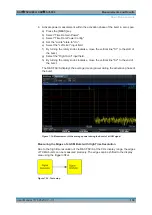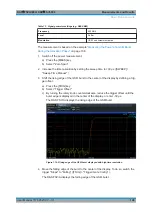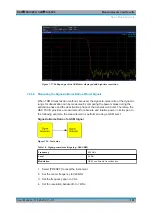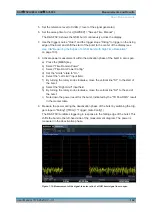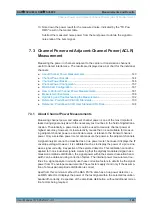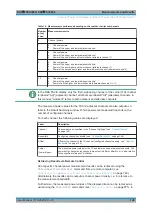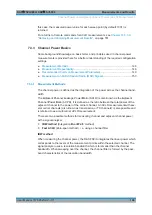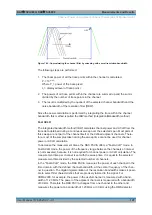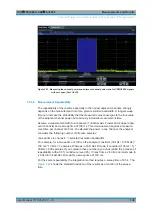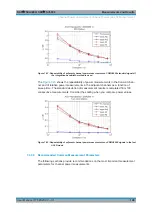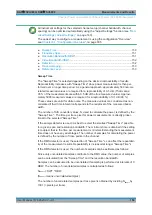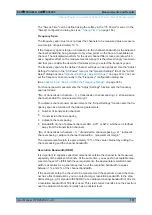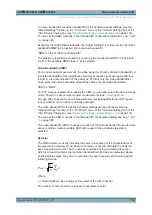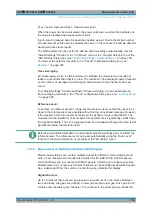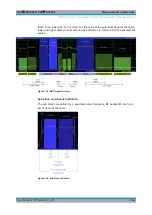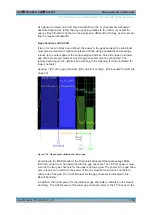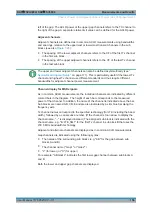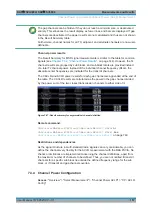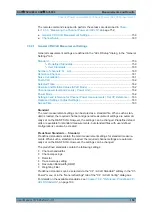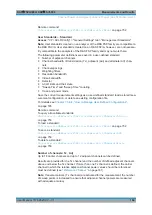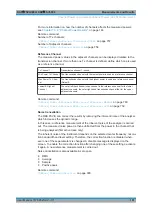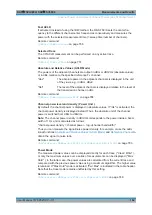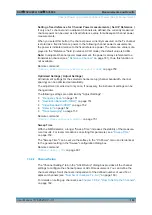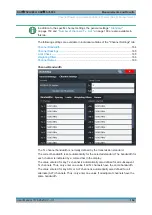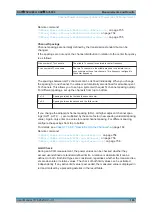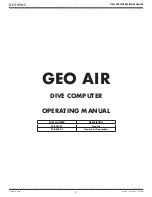
Measurements and Results
R&S
®
FSVA3000/ R&S
®
FSV3000
150
User Manual 1178.8520.02 ─ 01
All instrument settings for the selected channel setup (channel bandwidth, channel
spacing) can be optimized automatically using the "Adjust Settings" function (see
mized Settings ( Adjust Settings )"
The easiest way to configure a measurement is using the configuration "Overview" ,
see
Chapter 8.1, "Configuration Overview"
................................................................................151
........................................................................................152
Sweep Time
The "Sweep Time" is selected depending on the desired reproducibility of results.
Reproducibility increases with "Sweep Time" since power measurement is then per-
formed over a longer time period. As a general approach, approximately 500 non-cor-
related measured values are required for a reproducibility of 0.5
dB. (That means:
95 % of the measurements are within 0.5
dB of the true measured value). Approxi-
mately 5000 measured values are required for a reproducibility of 0.1
dB (99
%).
These values are valid for white noise. The measured values are considered as non-
correlated if their time interval corresponds to the reciprocal of the measured band-
width.
The number of A/D converter values, N, used to calculate the power, is defined by the
"Sweep Time" . The time per trace pixel for power measurements is directly propor-
tional to the selected "Sweep Time" .
If the sample detector is used, it is best to select the smallest "Sweep Time" possible
for a given span and resolution bandwidth. The minimum time is obtained if the setting
is coupled, that is: the time per measurement is minimal. Extending the measurement
time does not have any advantages. The number of samples for calculating the power
is defined by the number of trace points in the channel.
If the RMS detector is used, the selection of "Sweep Time" s can affect the repeatabil-
ity of the measurement results. Repeatability is increased at longer "Sweep Time" s.
If the RMS detector is used, the number of samples can be estimated as follows:
Since only uncorrelated samples contribute to the RMS value, the number of samples
can be calculated from the "Sweep Time" and the resolution bandwidth.
Samples can be assumed to be uncorrelated if sampling is performed at intervals of 1/
RBW. The number of uncorrelated samples is calculated as follows:
N
decorr
=
SWT * RBW
(N
decorr
means uncorrelated samples)
The number of uncorrelated samples per trace pixel is obtained by dividing N
decorr
by
1001 (= pixels per trace).
Channel Power and Adjacent-Channel Power (ACLR) Measurement




